On an iPhone, it's easy to blur or cross out faces and sensitive information found in your images — just use Apple's Markup tool for all your obfuscation needs. Things aren't as simple when it comes to videos. There are no built-in iOS features to blur, redact, or otherwise obscure people, objects, and text in videos, but we've found a free solution that gets the job done well without any watermarks.
For pro-style obfuscation with face and object tracking, you'd typically have to transfer the video to your computer and use expensive programs like Final Cut Pro or ScreenFlow. When editing on your iPhone, there's a super complicated trick to obscuring content in iMovie, but you're better off using third-party apps that have blur effects and face pixelation. The only issue is that most of them have watermarks, hidden in-app purchases, or ridiculous subscription costs.
We've looked through over 20 iPhone apps available in the App Store, and only one stood out as easy to use with zero watermarks, in-app purchases, and subscriptions, and it's called Blur-Video.
Reasons to Use Blur Effects in Your Videos
You can never be too careful when sharing your videos with family and friends via MMS or iMessage; even more so, your general audience on social platforms such as Instagram, Snapchat, TikTok, and YouTube.
A person in your video may not want their face plastered over the internet. More importantly, there could be personally identifiable information such as social security numbers, license plate numbers, addresses, and phone numbers in the video that could lead to identity theft or privacy invasion. Even COVID-19 vaccination record cards have sensitive data like birthdates on them.
Sharing sensitive information such as your address, phone number, family members' names, car information, passwords, work history, credit status, social security numbers, birth date, school names, passport information, driver's license numbers, insurance policy numbers, loan numbers, credit/ debit card numbers, PIN numbers, and bank account information is risky and should be avoided.
Install the App
Blur-Video was developed by Alan Cushway of Honk Honk Punch. All his apps have in-app purchases that unlock full functionality — all except Blur-Video. And like we said before, there currently are no watermarks or subscriptions either. Of course, that may change at any time, but it's all free and watermark-less right now.
There are in-app advertisements that will pop up from time to time to help with development costs, but they aren't too annoying when you consider the value the app is providing.
- App Store Link: Blur-Video: Censor with Blur Editor Tool (free)
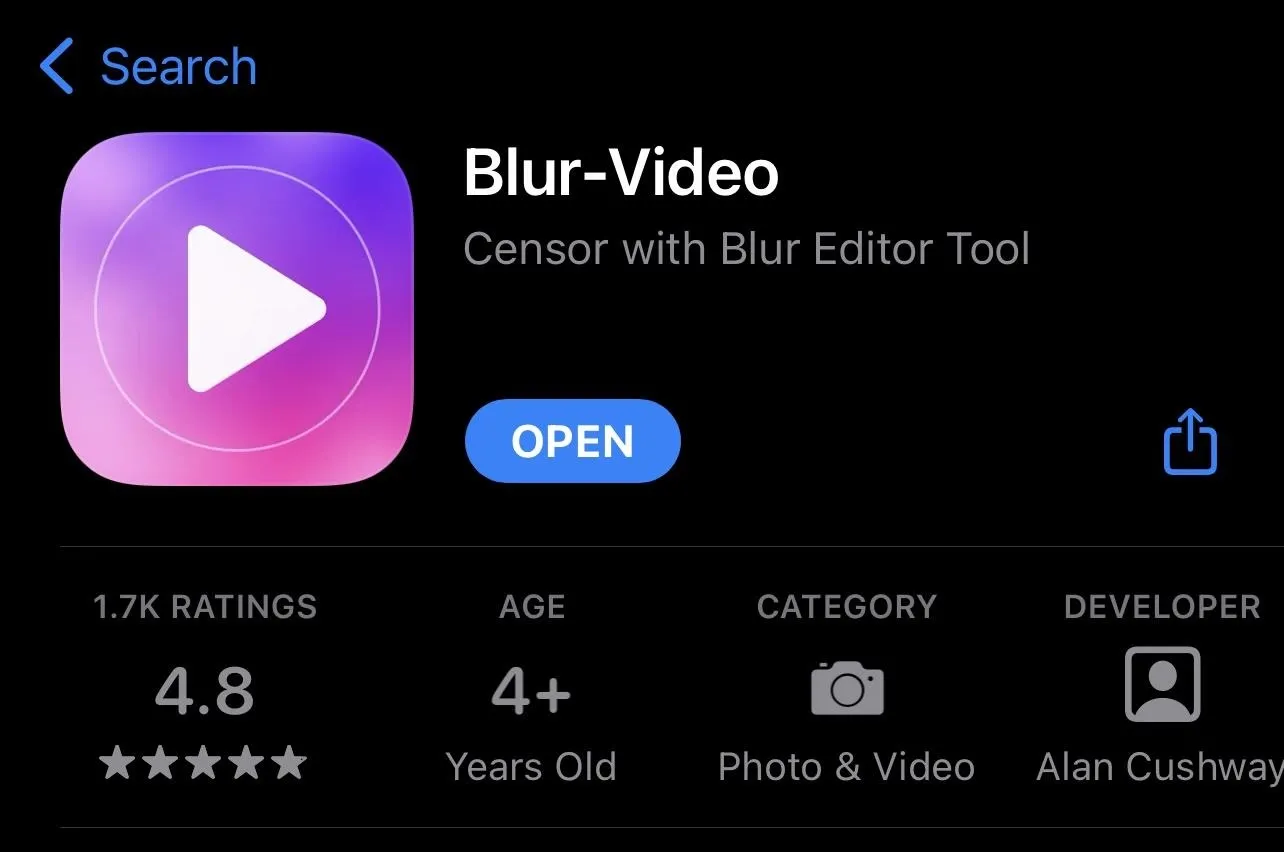
Allow Access to Your Videos
The app will ask for access to your camera roll in Photos when you first open it. Tap "Allow Access," then either "Select Photos," if you only want the app to see specific videos, or "Allow Access to All Photos," which makes things easier for future uses. Blur-Videos may also ask to track your activity, which is not required to use the app.




Changing Your Video Selection
If you choose only select videos, you can add more videos or switch to all videos later. For example, after tapping "Start" to view the available videos, it may ask you "Select More Photos" or "Keep Current Selection." If not, you'll find a "Manage" button at the top, which brings up an action sheet to "Select More Photos" or "Allow access to all photos."
When you select to pick more videos, the in-app Photos picker appears, where you can add or remove access to any of your videos. Choosing to switch to all content will open Blur-Video in Settings, where you can change your preference or edit the select content Blur-Video sees.
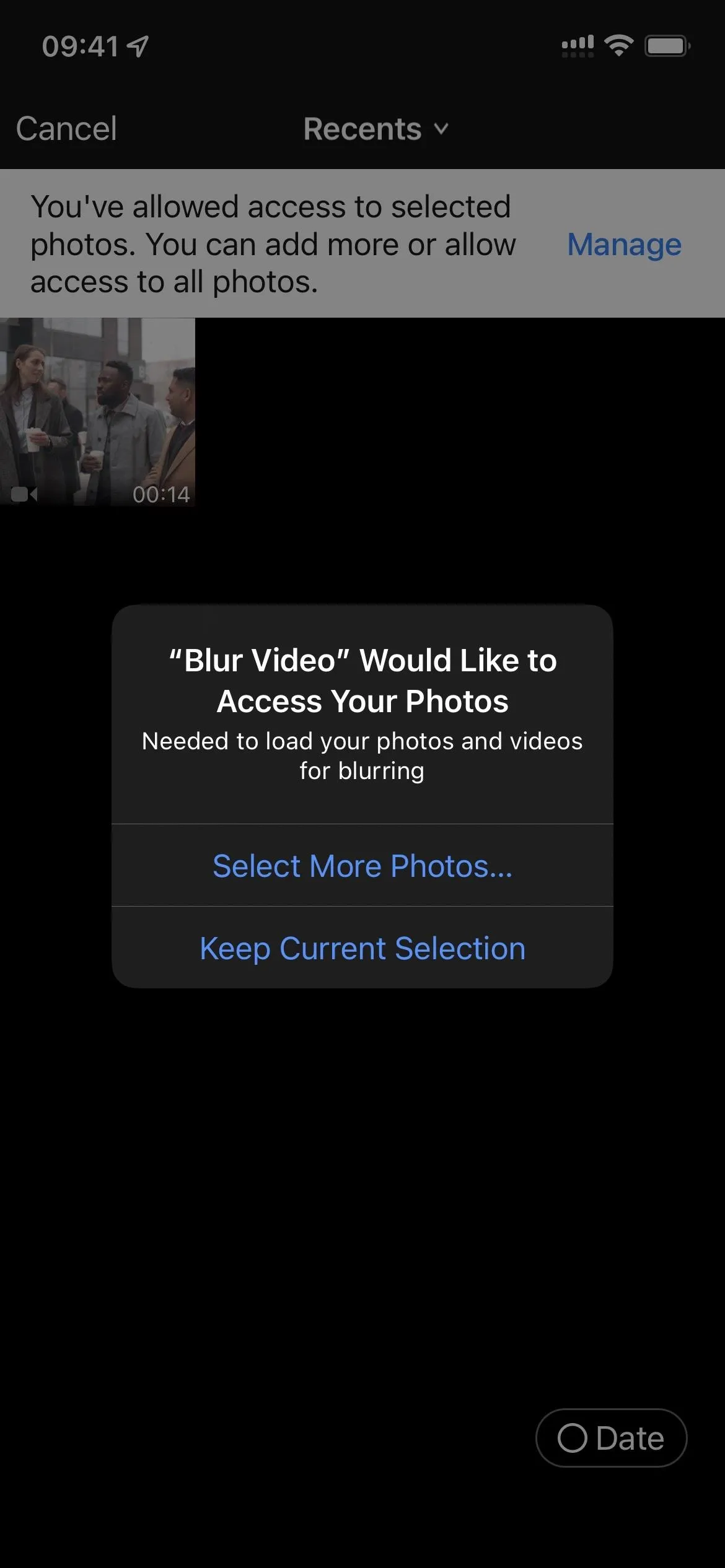
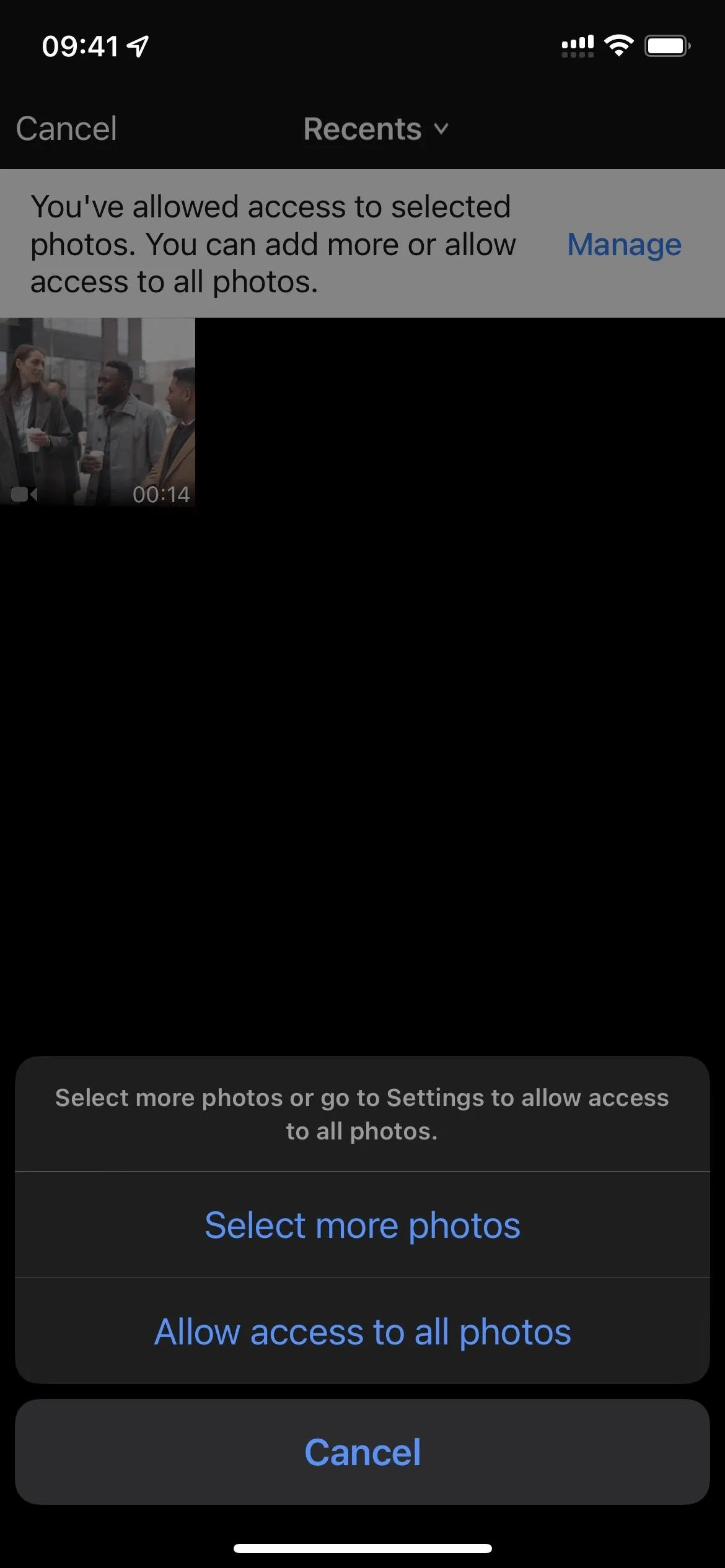




Change Quality and Format
Since you will not be able to change the settings after adding a blur to your video, you may want to go to the settings first to change the quality and ensure the file type is the right one for what you need. To do so, tap the settings icon in the top left of the "Start" page. You can then choose between low, medium, or high video quality and MP4 or MOV exports. Remember, the higher the quality, the larger the file size.




Select Your Video to Edit
After closing the settings page, tap "Start" to bring up the video selector and choose a video from your list. Review "Changing Your Video Selection" in Step 2 above if you don't see the one you want. Also, remember that you have to record a video before using it here — Blur-Video does not have a built-in camera.




Add Blur or Pixelation
You can add a blur or pixelation effect by tapping the "Add Blur" at the bottom, which brings up a circular blur overlay on your video. To adjust its position, tap and hold the orange circle and move it to where you want. To create multiple blurs, tap the "Add Blur" button again.
Blur-Video defaults to a Gaussian-type blur, so if you want a pixelated blur, you'll need to tap the "Pixelate" button up top to switch. If you have multiple blurs, they'll all be the same type.

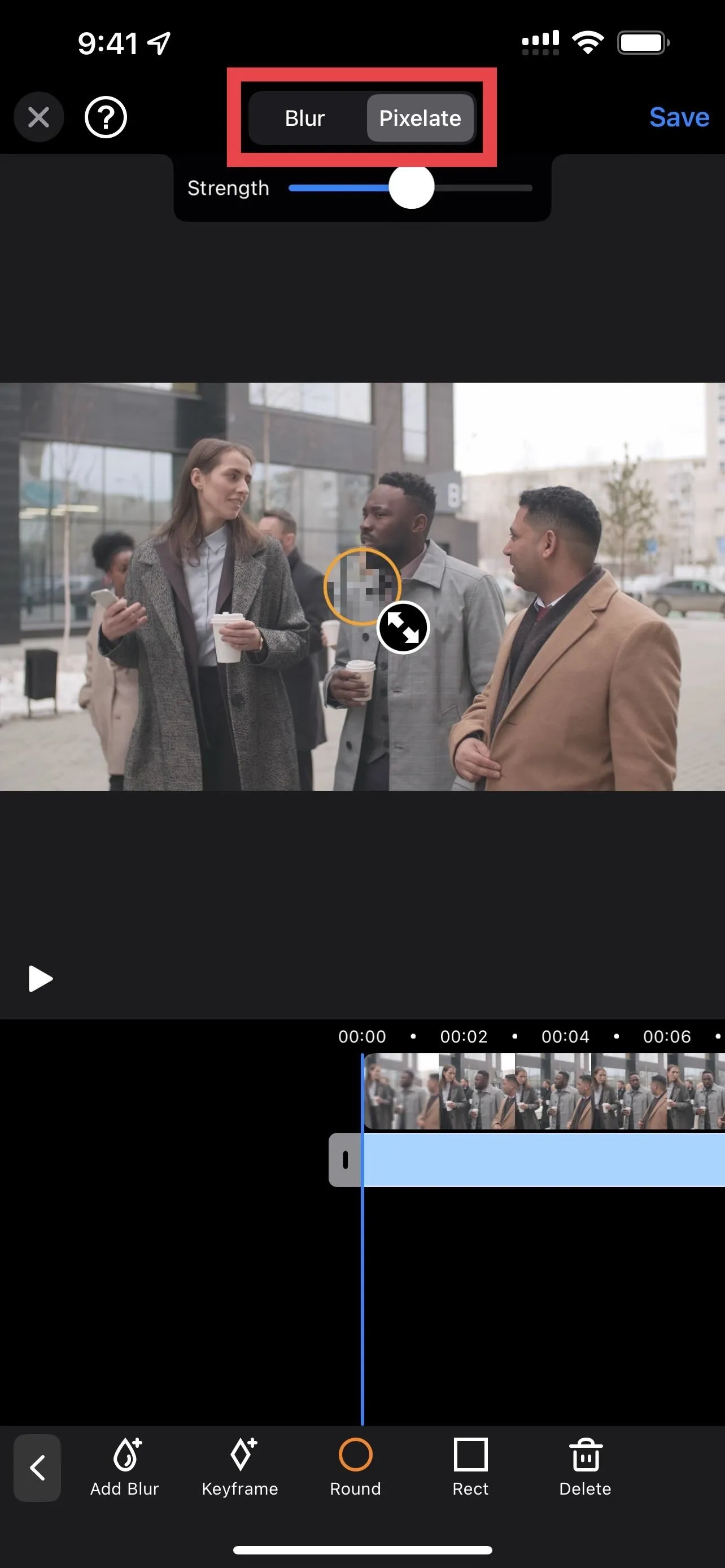




Change the Strength and Shape
To change the amount of blur or pixelation, use the "Strength" slider near the top. Like with the blur type, changing the strength affects all blurs if you have more than one; You do not have the option to change individual blur strengths.
Additionally, the app lets you change the size of the blur and even the shape. Tap and hold the arrows buttons, then drag it away or toward the blur to expand or minimize the size. To change the shape from a circle, tap the "Rect" button in the toolbar to switch to a square. Dragging the arrows button will also let you change the blur shape from a circle to an ellipse or a square to a rectangle.
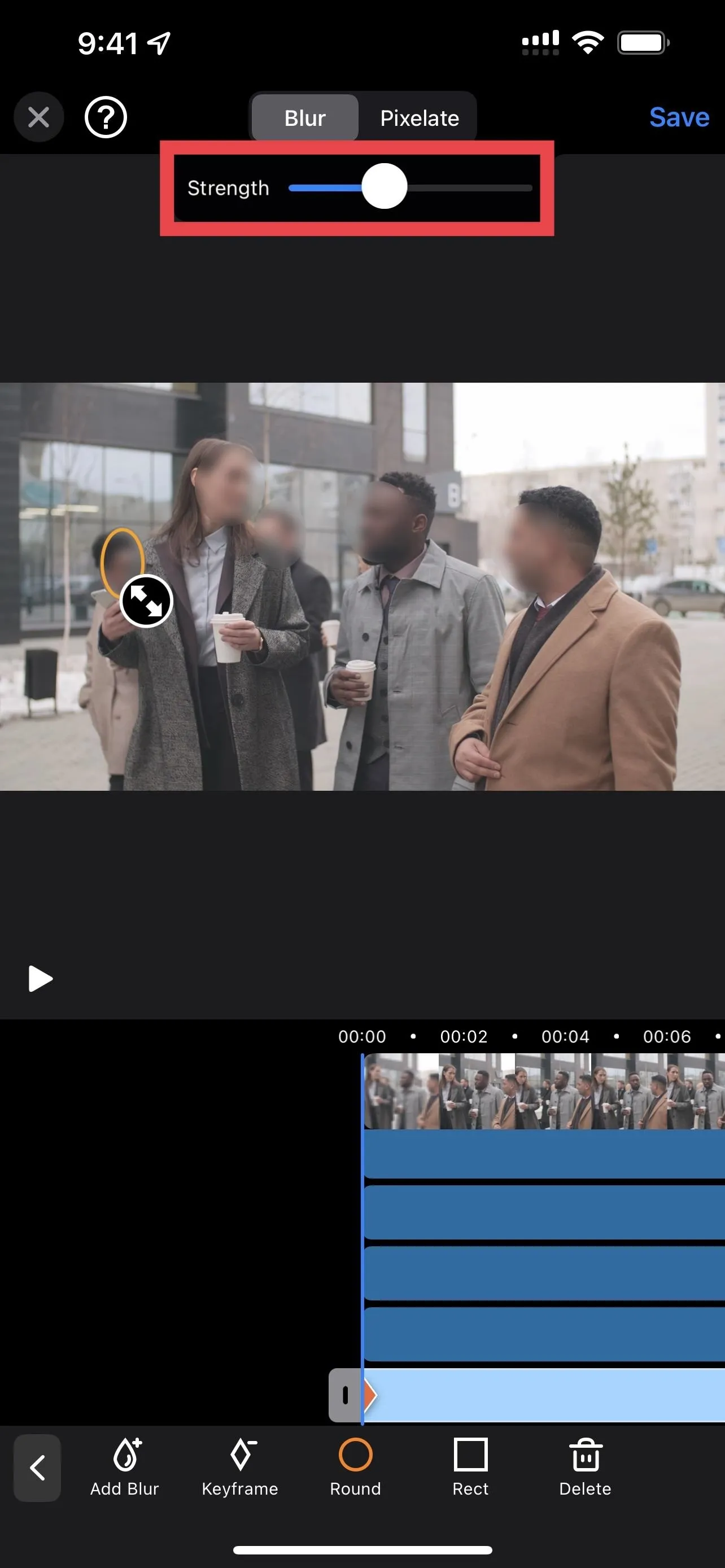
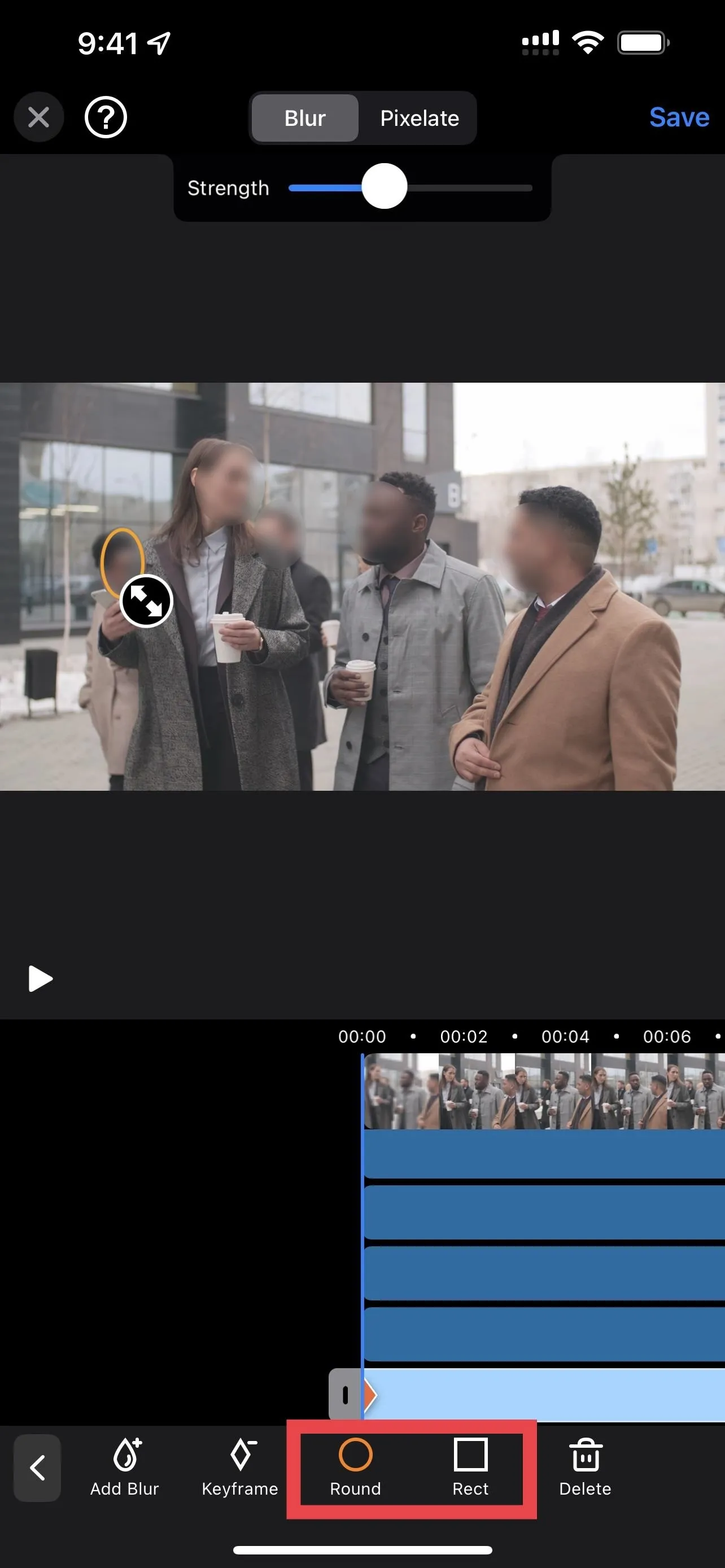


Change the Duration
You may want to make sure the blur doesn't occur outside of the scene where you need it. To do so, tap and hold the gray ends of the blur in the timeline. Then, drag them in or out to shorten or lengthen the clip. You can also long-press the entire blue clip until the gray ends disappear, then move it up or down the timeline so that it's in the correct spot.






Track Faces and Other Objects with Keyframes
If the person or object you're blurring moves, you can use a keyframe so that the rectangle or circle follows them. To do so, pause the video where the person moves, tap "Keyframe," and move the blur where it needs to go. The keyframe will show up as a diamond in the timeline. If you let the video play out, you'll see the blur slowly move to that position you have chosen.
We recommend that you wait until the item is further away from your original blur point and tap the keyframe button. It may take some experimenting before you get the hang of it.
Setting keyframes can be a little tedious if you have a video with people moving all the time. The more the object moves, the more keyframes you'll need. I had over 20 different keyframes to follow the man's face for about 13 seconds in my example. Hopefully, Blur-Video will incorporate an auto-tracking feature to automate the process, but the manual way works just fine.


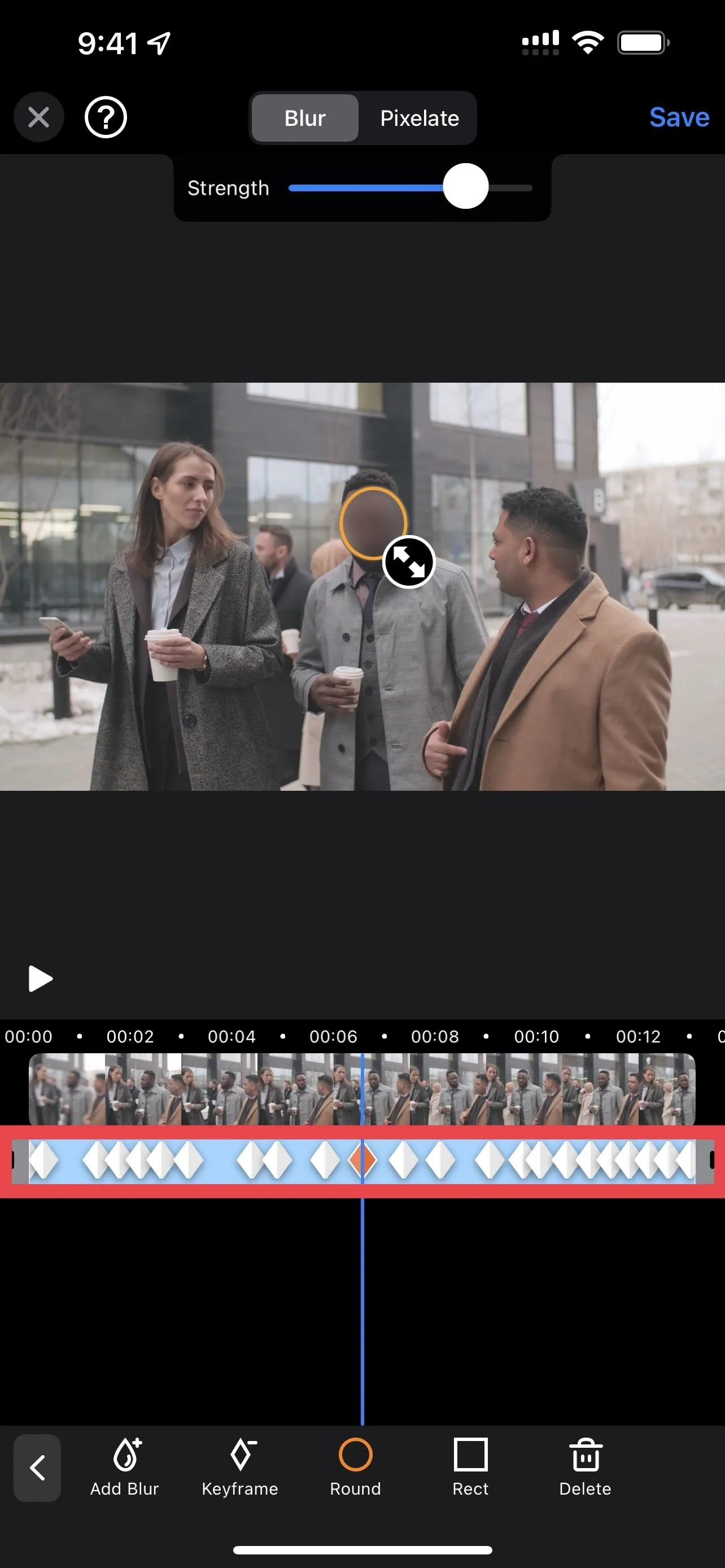



Save and Share Your Video
The last step is simply saving it. After you hit "Save," Blur-Video will save the video as a new clip in your Photos app. You can also share it directly after it does that using the "Share" button, which brings up your iPhone's share sheet where all of the usual share and action extensions reside.
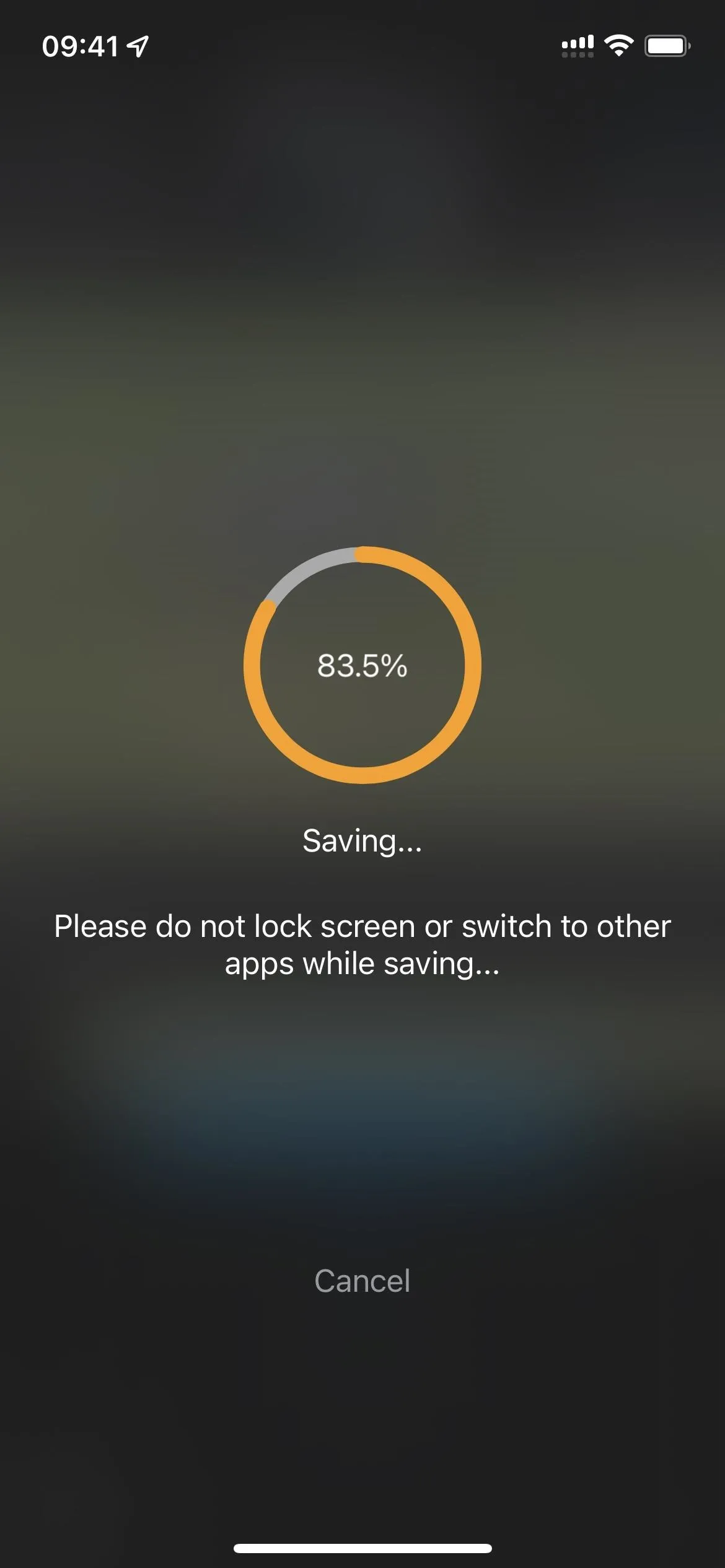





The End Product
Once the app finishes saving the video to your iPhone, you can play it from the Photos app. Your video will have a blur or pixelated effect following the object or objects you wanted to obscure. In the example below, I had the man's face blurred throughout the entire video.

Cover photo, screenshots, and GIFs by Daniel Hipskind/Gadget Hacks

























Comments
Be the first, drop a comment!